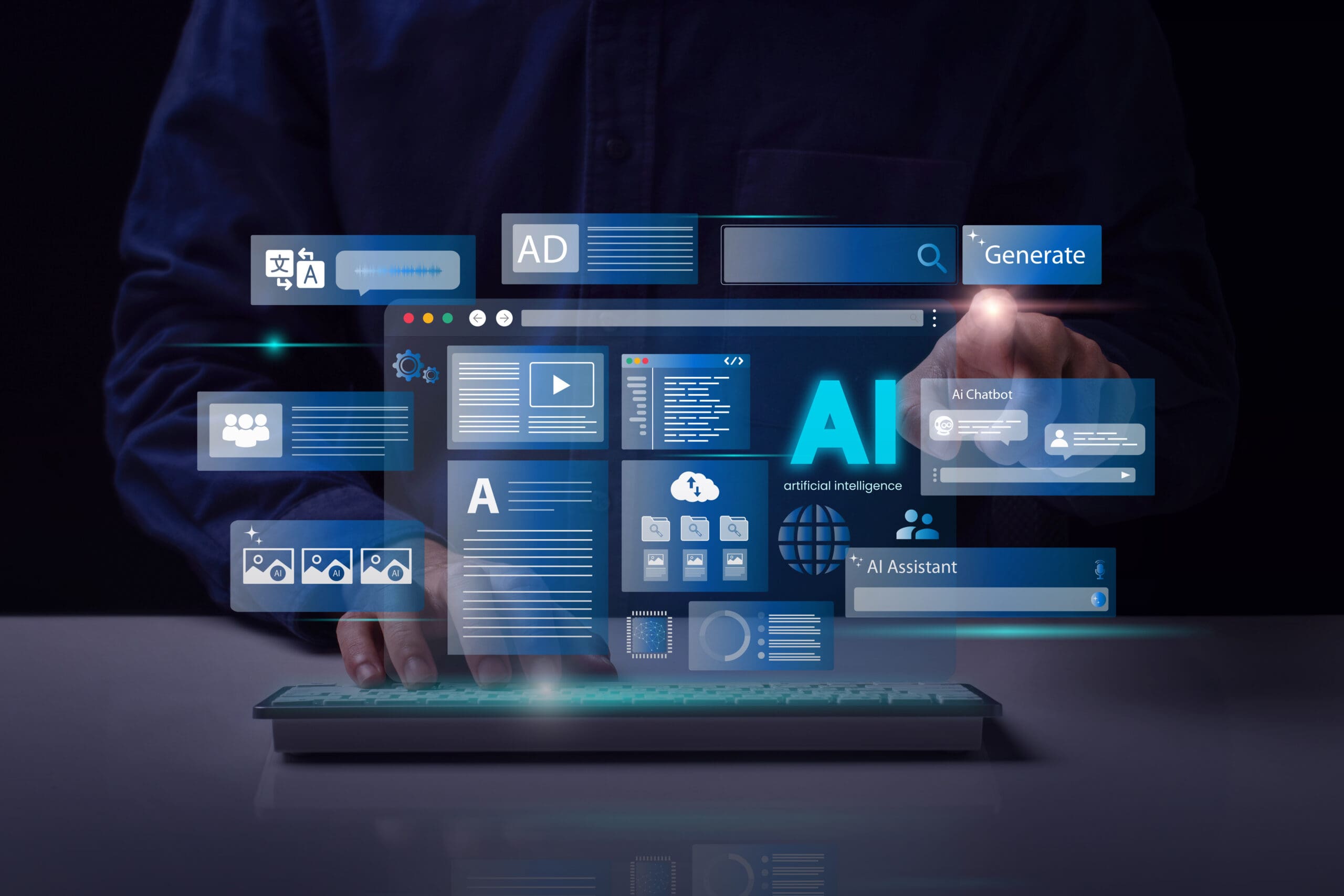
How AI is Changing the Way We Approach Web Design
Artificial Intelligence (AI) is revolutionizing web design by making it more intuitive, personalized, and efficient. This shift enables designers to create highly tailored user experiences and streamline processes, although it comes with challenges. AI technologies, including adaptive AI and deep learning, enhance user experience (UX) design and simplify development.
While AI offers exciting possibilities, it also raises ethical concerns and limitations that developers must navigate. As AI continues to evolve, its influence on web design is expected to expand, shaping the future of digital experiences.
What is Artificial Intelligence (AI)?
Artificial Intelligence (AI) enables machines to perform tasks that usually require human intelligence, such as language comprehension, pattern recognition, and data-driven decision-making. It includes machine learning, where systems adapt and improve through data, and deep learning, which mimics human brain processes through neural networks. This technology has become integral across various industries, enhancing digital experiences and transforming web solutions by optimizing content and processes.
How is AI Used in Web Design?
AI is increasingly becoming integral to web design, enhancing how designers create and manage users. AI transforms web design by automating tasks, optimizing visuals, and creating personalized user experiences. Tools like Adobe, Wix, and Squarespace leverage AI to enhance design efficiency, while chatbots powered by natural language processing engage users in real time, boosting satisfaction.
AI-driven analytics provide valuable insights into user behavior, enabling designers to make data-informed decisions through A/B testing and predictive analysis. However, AI has limitations, such as its reliance on high-quality user data and the complexity of implementing adaptive systems, which can lead to inconsistent results and challenges in customization. Despite these hurdles, AI continues to streamline design processes, offering faster and more responsive websites that cater to user needs.
What are the Different Types of AI in Web Design?
Natural Language Processing (NLP): NLP enhances user experience by enabling smart features like chatbots, smart search, and voice recognition, allowing websites to interact with users naturally and efficiently. It personalizes user interactions and improves engagement through sentiment analysis and tailored responses.
Machine Learning: This technology automates design processes, analyzes user behavior to predict future actions, and tailors web experiences based on past interactions. It also supports A/B testing, helping designers create high-conversion layouts and dynamic content.
Neural Networks: Neural networks mimic human brain functions to automate complex coding tasks, speeding up prototyping and improving design accuracy. They generate adaptive layouts, offer personalized content, and identify coding errors, freeing up developers to focus on innovation.
How Does AI Impact User Experience in Web Design?
AI transforms UX design by enabling personalized experiences through recommendation tools and advanced analytics, significantly boosting user engagement and satisfaction. By tailoring content and visual elements to individual preferences, AI allows for a more customized browsing experience, particularly in e-commerce, where product suggestions based on user history enhance engagement.
Personalization also leads to improved retention rates and higher conversion. AI optimizes web design by improving load times with techniques like image optimization, code minification, and caching strategies, creating a smoother user experience. Additionally, adaptive AI analyzes real-time user behavior to adjust content and layouts dynamically, fostering deeper user engagement and loyalty.
What are the Ethical Implications of Using AI in Web Design?
Integrating AI in web design raises significant ethical considerations, particularly around user data and privacy. As AI-driven tools like those from Wix or Squarespace analyze user interactions and personalize experiences, designers must prioritize responsible data handling. Maintaining privacy is one of the most critical challenges, as users increasingly demand control over their personal information.
Transparency in data collection, use, and storage is essential to building trust, and designers should implement precise consent mechanisms that actively inform users about how their data is managed. A thoughtful approach to AI, focusing on ethical data use and security, not only improves user experience but also reinforces the commitment to safeguarding users’ interests and maintaining trust in digital platforms.
How Can Web Designers Incorporate AI into their Work?
Utilizing AI Tools and Plugins: AI tools like Adobe and Figma’s plugins automate repetitive tasks, analyze user behavior, and provide design insights, helping web designers optimize productivity and enhance user experience. Automated testing tools ensure site responsiveness, while image optimization plugins improve performance.
Understanding and Implementing AI Algorithms: Web designers can improve user experiences by learning AI algorithms and integrating them into design interfaces. Understanding machine learning and data analytics enables designers to create personalized, data-driven designs, refine layouts through A/B testing, and better adapt to user behavior.
Collaborating with AI Specialists: Partnering with AI experts fosters innovation and ensures web designs meet aesthetic and functional goals. This collaboration enhances creativity, provides valuable data insights, and streamlines workflows by automating tasks, allowing designers to focus more on creative solutions.
What is the Future of AI in Web Design?
AI’s future in web design will bring significant changes with advancements in personalization, automation, and predictive tools. As these technologies evolve, web developers can create more user-friendly and engaging websites tailored to individual needs in real time. Enhanced automation will streamline design processes, while predictive analytics will help developers anticipate user behavior and preferences. These innovations will make web applications more intuitive and efficient, transforming users’ interactions with digital platforms.